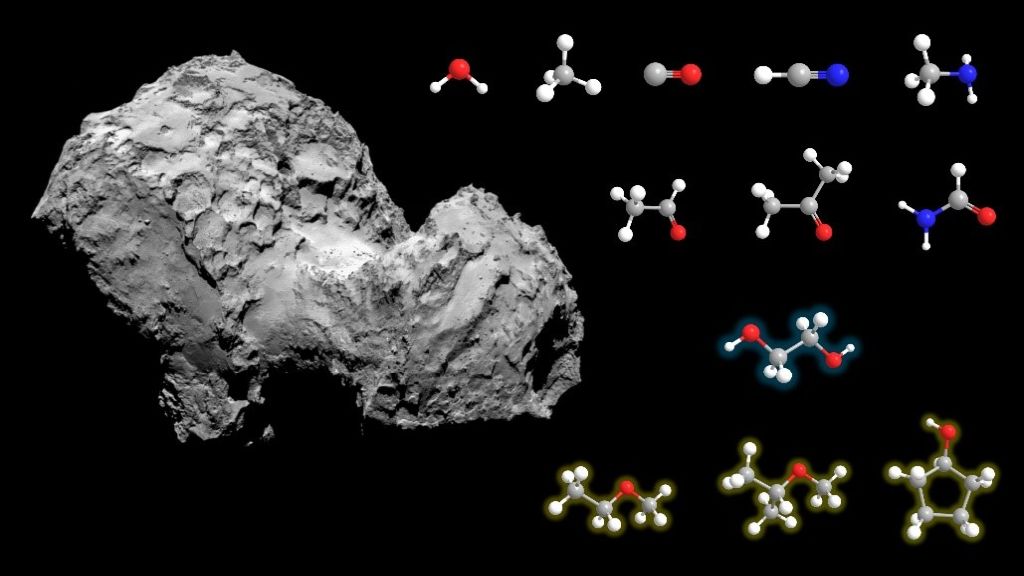New analysis of COSAC data from the Rosetta mission
- 1Max Planck Institute for Solar System Research, Göttingen, Germany (leseigneur@mps.mpg.de)
- 2Institut de Chimie de Nice, Université Côte d'Azur, Nice, France
In 2014, the Rosetta space probe delivered its lander module Philae to the nucleus of comet 67P/Churyumov-Gerasimenko. After a non-nominal landing, instruments onboard Philae had very limited time and energy to operate. After the initial touchdown (supposed to be the only one) on the surface of the comet, COSAC, a Gas Chromatograph coupled to a Mass Spectrometer (GC-MS) embarked on Philae, took an automated mass spectrometric measurement. This data was produced during the bounce, and revealed a clear signal with intensity and diversity far greater than what was seen in the several blanks taken until this point. This signal was shown to come from excavated material from the surface which, at the moment of impact, entered the mass spectrometer’s chamber through its exhaust port located underneath Philae’s body. This data therefore represents the first ever sampling of a cometary nucleus. The core of this limited dataset is a single mass spectrum containing a mixture of unknown volatile molecules coming from the nucleus of the comet. The COSAC team published a deconvolution of this mass spectrum in 2015, identifying 16 organic molecules [1]. We revisited this dataset and applied a newly developed deconvolution method tailored for this specific and unusual problem [2]. We reduce the “clearly identified” pool of molecules to 12, including 3 new molecules never detected before on a comet (Figure 1 and 2).
Once at rest on the comet, using the very last of Philae’s available power, a drilling sequence was launched in the hope of feeding material from the surface of the comet to the analytical laboratory onboard the lander. COSAC was given priority for its analysis as it was the only instrument capable of chiral separation. A full GC-MS science sequence was launched on the COSAC instrument in the hope of obtaining a precise chemical composition of the nucleus of 67P. Unfortunately, due to the awkward position of Philae on the surface, the drill of the SD2 instrument did not penetrate the ground and very little to no material is believed to have been provided to COSAC. Here we show that although the landing and sampling were not nominal, the COSAC instrument worked as expected and produced a 17-minute gas chromatogram comprised of 421 individual mass spectra. We present an in-depth analysis of this previously unpublished gas chromatogram, the first and only one of its kind acquired on a comet for the foreseeable future [3]. We put forward the possibility of a small signal coming from ethylene glycol, a molecule also detected in the deconvolved COSAC mass spectrum (Figure 2, molecule highlighted in blue).
Figure 1. Individual color-coded contributions of the 12 molecules found in this research to the COSAC mass spectrum.

Figure 2. Comet 67P/Churyumov-Gerasimenko and a 3D visualization of the 12 organic molecules identified by this research: water, methane, carbon monoxide, hydrogen cyanide, methylamine, acetaldehyde, acetone, formamide and ethylene glycol are all confirmations from the original analysis of the mass spectral data. Additionally, 3 new molecules were found (in yellow): 2 methoxy compounds and cyclopentanol, all of which were not detected before on a comet. Image of the comet: ESA/Rosetta/MPS for OSIRIS Team PS/UPD/LAM/IAA/SSO/INTA/UPM/DASP/IDA
[1] Goesmann, F. et al. Organic compounds on comet 67P/Churyumov-Gerasimenko revealed by COSAC mass spectrometry. Science 349, aab0689 (2015).
[2] Leseigneur, G. et al. ESA’s Cometary Mission Rosetta—Re-Characterization of the COSAC Mass Spectrometry Results. Angewandte Chemie International Edition 61, e202201925 (2022).
[3] Leseigneur, G. et al. COSAC’s Only Gas Chromatogram Taken on Comet 67P/Churyumov-Gerasimenko. ChemPlusChem 87, e202200116 (2022).
How to cite: Leseigneur, G. and Meierhenrich, U.: New analysis of COSAC data from the Rosetta mission, Europlanet Science Congress 2024, Berlin, Germany, 8–13 Sep 2024, EPSC2024-1075, https://doi.org/10.5194/epsc2024-1075, 2024.